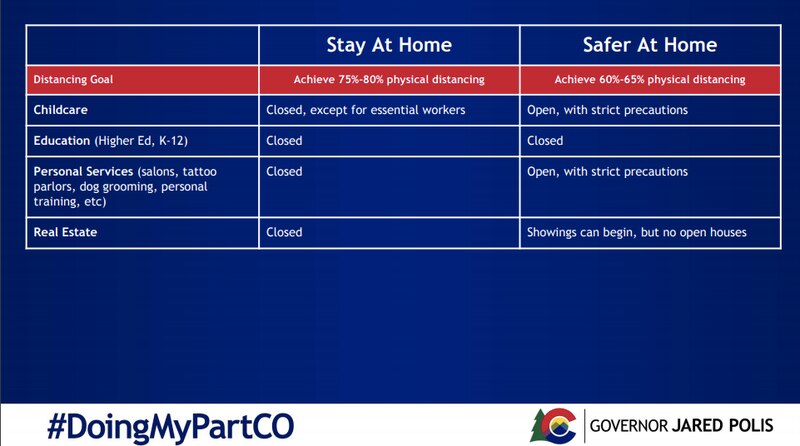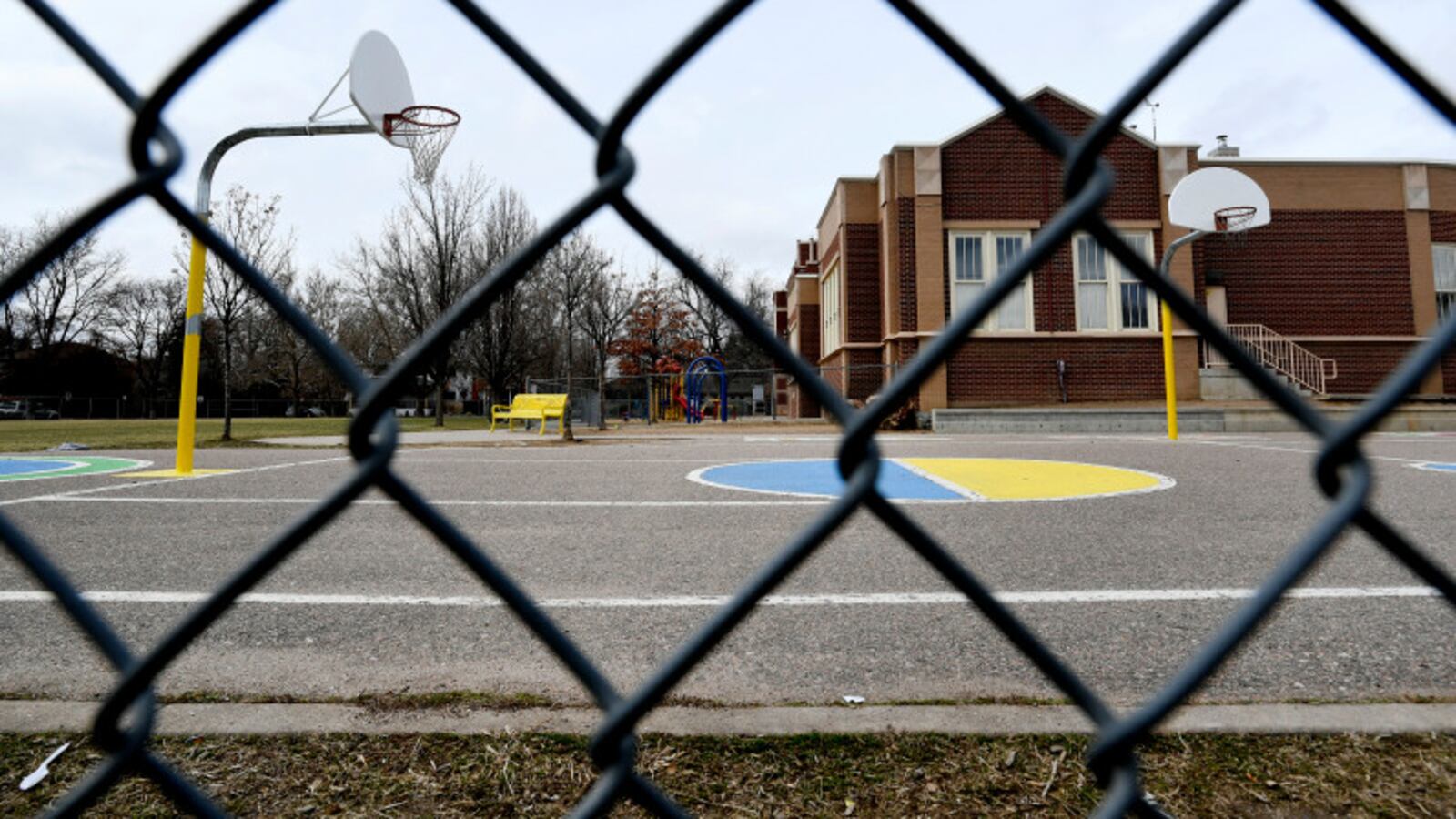Colorado schools will be closed for the rest of the school year, even as Gov. Jared Polis laid out a plan for a partial reopening of many non-essential businesses.
The governor’s office announced the extended closure hours after Polis held a press conference describing a phased approach that would allow many non-essential retail businesses, manufacturing plants, offices, and service providers to re-open from April 27 to May 4.
One slide presented at that press conference indicated that K-12 schools and institutions of higher education would remain closed, but Polis placed no date on the extension and did not talk about schools at all. Chalkbeat was not able to ask any questions at the press conference.
“During this phase Coloradans will no longer be ordered to stay home, but are still strongly encouraged to do so. Vulnerable populations and seniors must continue staying home except when absolutely necessary and K-12 school districts and postsecondary institutions will continue to suspend normal in-person instruction until the end of the school year,” a press release from the governor’s office said.
Colorado’s current stay-at-home order expires Sunday. A separate order closed all Colorado schools through April 30, and roughly two dozen school districts that serve the majority of Colorado students, including most districts in the Denver metro area, already had made their own decision to close through the end of the school year in late May.
More than half the states in the country have closed their schools for the rest of the academic year, and Polis had said repeatedly that it was “unlikely” that school would return to session.
However, Polis had not previously made a formal decision, and many districts, especially in rural parts of the state, had held off on their own decisions as well.
One of them was the East Grand School District in northwestern Colorado.
Speaking before the announcement, Superintendent Frank Reeves said he was under no illusion that in-person instruction would resume.
“To transform the way we did, to ask our staff to transform back the way it was? I don’t think we could do this,” he said. “I don’t think a large number of students would come back to school this year. And I don’t think we could ask our teachers to come back and teach the kids that are there and continue distance learning.”
But he still hoped to get state permission to have students and teachers return to school.
“The ideal would be to have a few days back with the kids so we would end the year normally,” he said. “I don’t even see it as academic time. It’s end-of year-time. I can’t imagine the start of next year, if we don’t have something this year.”
A call is scheduled Tuesday between superintendents and state officials. Superintendent Lisa Yates of the Buena Vista school district said she’ll be seeking clarity on whether any in-person gatherings between students and teachers will be allowed, even if instruction remains remote.
She had hoped that the possibility of returning to school would keep families engaged. Many Colorado school districts have said that students’ emotional needs have now become their top concern.
“The longer you keep people with that hope, the longer you keep them engaged. If you take away that hope, you lose those families,” she said.
The Colorado Education Association, the state’s largest teachers union, supported the decision to keep schools closed, calling it a “difficult, yet necessary decision.”
“Many school districts had already made the prudent decision to cancel in-person learning for the remainder of the school year so this announcement is not unexpected,” President Amie Baca-Oehlert said in a press release. “Still, it is crushing news to know with finality that we will not see the daily gathering of students and educators in these wonderful places of learning and inspiration, our public schools.”
Polis has repeatedly cited the psychological and emotional toll — along with the economic impact — of the stay-at-home order as a major reason to move toward what he calls “safer-at-home” or “sustainable social distancing.”
“It’s a time to be careful,” he said “It’s a time to be safer at home, but to live in a more sustainable way, psychologically, economically, being able to put bread on the table.”

According to the most recent state data, Colorado has more than 10,000 confirmed cases of COVID-19 and 449 people have died. Public health officials believe that the actual number of cases is between 65,000 and 75,000.
State public health officials expect those numbers to continue to rise. But they presented modeling that predicted that a combination of most people continuing to stay at home most of the time, people in high-risk categories staying at home all the time, public mask-wearing, and expanded testing and contact-tracing can keep the number of very sick people below the number of intensive care beds in the state.
Polis said this would give those infected “a fighting chance of staying alive.”
Colorado still has limited testing capacity or ability to engage in extensive contact tracing.
School closures have been a key part of the social distancing strategies that slowed the spread of the virus.
Starting April 27 through May 4, non-essential retail businesses will be allowed to open, first to curbside pickup and then to shoppers, provided businesses take the types of precautions now common in grocery stores, such as markers to space out people in line and one-way aisles. Offices will also be allowed to reopen at 50% capacity, but Polis encouraged all workers who can do so to telecommute.
Polis said he’ll be watching the data before deciding whether restaurants and bars can reopen.


